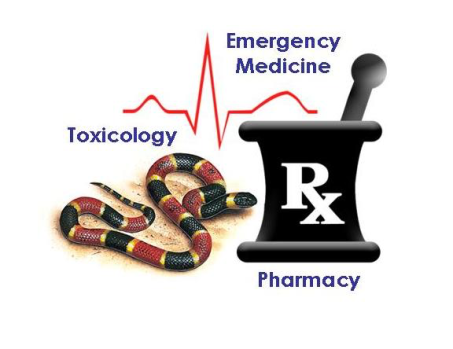Activated charcoal is a funny intervention. There is plenty of data, with various drugs, demonstrating decreased absorption after its administration (much of it in healthy volunteers). However, there is a lack of quality evidence demonstrating benefit in clinically meaningful outcomes, such as mortality. In fact, the most recent Position Paper on Single-Dose Activated Charcoal (from 2005) suggests charcoal “should not be administered routinely in the management of poisoned patients.” This may be an oversimplification and I think Drs. Lotte Hoegberg and Anne-Bolette Gude astutely address this point in Goldfrank’s Toxicologic Emergencies:
“These opinions are unfortunately biased by the fact that most ‘routinely’ poisoned patients have low-risk exposures and do well with minimal intervention. Despite little scientific basis or support from clinical trials, less severely poisoned patients might benefit from activated charcoal in terms of reduced need for life support, monitoring, and antidotes.” (Isbister 2011)
And, there is data demonstrating a lower risk of seizures (venlafaxine, Kumar 2011), QT prolongation (citalopram, Friberg 2006), and delirium (promethazine, Page 2009) after charcoal administration. [Thanks, Dr. Martin Caravati, via Twitter!]
Conventional teaching is that the most benefit will be gained if charcoal is administered within the first hour after an overdose. This is important because we know that if charcoal is not administered in the prehospital setting, patients arriving to the Emergency Department are unlikely to receive it within that time frame.
The purpose of this brief post is to draw your attention to two recent articles that may change our thinking in when/how to use charcoal.
Study 1 (Ollier 2017)
Charcoal reduced rivaroxaban absorption up to 8 hours after administration
What They Did
- 12 health volunteers were given a 40 mg dose of rivaroxaban
- Activated charcoal was given at 2, 5, or 8 h post-dose
What They Found
In this pharmacokinetic study, charcoal reduced the area under the rivaroxaban concentration-time curve by 43% at 2 h post-dose, by 31% at 5 h post-dose, and by 29% at 8 h post-dose
Study 2 (Chiew 2017)
In massive acetaminophen overdose, charcoal reduced hepatotoxicity
What They Did
- 200 patients with massive acetaminophen overdose (≥40 gm)
- Outcomes
- Paracetamol (acetaminophen) ratio [defined as the ratio of the first paracetamol concentration taken 4-16 h post-ingestion to the standard (150 mg/L at 4 h) nomogram line at that time]
- Hepatotoxicity (ALT >1000 U/L)
What They Found
- Patients receiving activated charcoal within 4 h of ingestion had significantly lower paracetamol ratio versus those who did not: 1.4 (n = 33, IQR: 1.1–1.6) vs. 2.2 (n = 140, IQR: 1.5–3.0) (p < .0001)
- Patients receiving activated charcoal had lower rates of hepatotoxicity [unadjusted OR: 0.12 (95% CI: <0.001–0.91); adjusted for time to acetylcysteine OR: 0.20 (95%CI: 0.002–1.74)]
- Charcoal was just one intervention evaluated in this study, with increased acetylcysteine doses being another
Application to Clinical Practice
- Each individual case should be evaluated for the potential benefit/harm of activated charcoal
- Just because it’s been more than an hour since ingestion, charcoal may still reduce absorption and provide clinical benefit
- We now have evidence that charcoal within 4 hours actually reduced hepatotoxicity from massive acetaminophen overdose, when combined with acetylcysteine
